Montana is the 4th largest state in America by land area and has a population of only about 1 million. That gives you endless space of untouched landscape for the outdoor trip of a lifetime. From beloved national parks to protected national forests, Montana offers millions of acres to explore. Far away from major metropolitan areas, the best way to immerse yourself in the Montana wilderness is to camp.
Whether you’re a tent camper or traveling inside an RV, or one of those who are into fancy glamping, Montana welcomes all types of campers. The crisp mountain air, crystal-clear lakes, big skies, and rich wildlife will be at your bedside on a Montana camping trip. Pack your camping essentials and head out on your next adventure to this incredible state by camping at one of these 15 beautiful locations.
15 Best Camping Spots in Montana
Glacier National Park | Yellowstone National Park | Flathead National Forest | Helena-Lewis and Clark National Forest | Helena National Forest | Kootenai National Forest | Custer Gallatin National Forest | Bighorn Canyon National Recreation Area | Lolo National Forest | Beaverhead-Deerlodge National Forest | Lewis & Clark Caverns State Park | Makoshika State Park | Medicine Rocks State Park | Lost Creek State Park | Whitefish Lake State Park |
1. Glacier National Park
Welcoming about 3 million visitors per year, Glacier National Park continues to be one of Montana’s star tourist attractions. Nicknamed the “Crown of the Continent,” Glacier’s jagged peaks, U-shaped valleys, alpine meadows, glacial lakes, and diverse wildlife is an explorer’s paradise. There are over 700 miles of hiking trails, around 1 million acres of untouched wilderness, historic lodges, and hair-raising driving routes.
The Going-to-the-Sun road courses through the park and is among America’s best scenic drives. Although not for the faint of heart, driving the road offers sensational mountain and lakeside vistas perfect for a postcard. You’ll pass popular areas such as Lake McDonald, the Weeping Wall, Logan Pass Visitor Center, Jackson Glacier Overlook, and Saint Mary Lake. Due to several hairpin turns, vehicles must be under 21 feet long, 8 feet wide, and less than 10 feet tall, and RV campers might want to consider bringing an extra vehicle.
If you plan on visiting Glacier National Park during summer, it’s imperative to book campsites in advance or arrive before the crack of dawn to secure a site. There may be 13 campgrounds and around 1,000 individual campsites, but they are often full at peak tourist season. Fish Creek, St. Mary, half of the sites at Many Glacier, and half of the group sites in Apgar accept reservations. All other campgrounds inside Glacier National Park are first-come, first-served sites.

2. Yellowstone National Park
Yellowstone became America’s first national park in 1872 and is beloved by explorers all over the world. Although most of the park is located inside Wyoming, it also encompasses sections of Montana and Idaho. Famous for its abundant wildlife and geothermal wonders, Yellowstone offers a rare adventure for intrepid explorers. From subalpine forests and wide valleys to black-sand beaches, Yellowstone’s diversity is off the charts.
Yellowstone receives about 4 million visitors per year and ranks as the 6th most visited national park in the United States. The park contains half of the world’s geysers and rests above the largest supervolcano in North America. Natural wonders such as the Grand Prismatic Spring and Grand Canyon of the Yellowstone continue to capture the imaginations of artists and nature lovers.
Wildlife enthusiasts can visit the Hayden or Lamar Valleys to explore and learn about one of North America’s biodiversity hot spots. The free-range bison herd steals the spotlight, but you’ll also find grizzly bears, black bears, wolves, elk, mule deer, bighorn sheep, pronghorn, and more.
Yellowstone has 12 campgrounds with around 2,000 sites and most are first-come, first-serve. Five campgrounds (Bridge Bay, Canyon, Fishing Bridge RV Park, Grant Village, and Madison) let you reserve sites in advance. If you’re entering Yellowstone from Montana, the Mammoth and Indian Creek Campgrounds near the Gardiner entrance and Madison Campground from the West Yellowstone entrance are the most convenient spots.

3. Flathead National Forest
Flathead National Forest lies directly south of Glacier National Park and offers solitude for those wishing to escape the tourist crowds. Containing about 2.4 million acres, Flathead National Forest treats campers endless outdoor recreation throughout the year. There over 2,200 miles of hiking trails that take you to alpine lakes, sharp valleys, and inspirational mountain ranges. During the summer, outdoor enthusiasts can spend days trekking, cycling, horse riding, picnicking, and rafting.
There are several lake campgrounds scattered around the forest that grant access to many water activities. Nestled in the beautiful Swan Valley, the Holland Lake Campground provides a fantastic base to explore the forest. Your campsite will be situated beside one of the state’s crystal-clear lakes, have a stunning mountain backdrop, and located near the Holland Falls National Recreation Trail.
While you’re exploring this area, don’t miss the chance to visit Flathead Lake for magical days on the water. With about 185 miles of shoreline, Flathead Lake is the largest natural freshwater lake in Montana. Locals and visitors spend days swimming, fishing, water skiing, sailing, and camping. In total, Flathead National Forest has 31 campgrounds and include amenities such as water, picnic tables, boat launches, fire rings, and some even have Wi-Fi service.
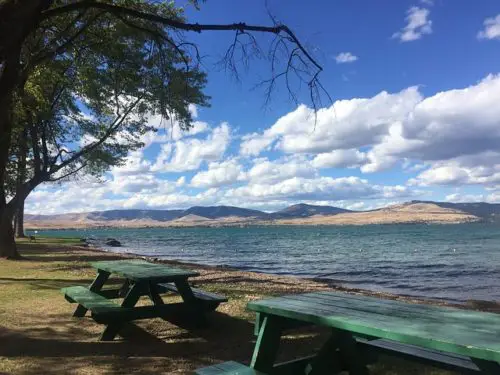
4. Helena-Lewis and Clark National Forest
Situated in central Montana, Helena-Lewis and Clark National Forest encompasses 13 counties and seven mountain ranges. The famous Lewis and Clark Expedition passed through these landscapes in the early 19th century, and the forest gets its name from the two pioneers.
Headquartered in Great Falls, the forest contains two distinct regions that offer travelers different types of scenery. From shrublands and grassy meadows to coniferous forests and rugged mountain peaks, it’s a nature lover’s paradise.
Helena-Lewis and Clark National Forest offers a wide range of recreational activities, including hiking, horseback riding, skiing, snowmobiling, and scenic drives. With around 1,600 miles of rivers and streams, anglers will find some of Montana’s best fly-fishing inside the forest.
There are 29 vehicle-accessible campgrounds inside the forest, and most include basic amenities. You’ll also find a few camping spots that accommodate large groups and RVs. Remote hiking trails surround the campgrounds, and it’s easy to find solitude trekking through the wilderness.
5. Helena National Forest
Situated in west-central Montana, Helena National Forest covers nearly 1 million acres of rugged wilderness explored by Lewis & Clark on their famous voyage. The Big Belt Mountains and Gates of the Mountains Wilderness cover parts of the forest, and other sections cross the Continental Divide. About 80 miles of the Continental Divide National Scenic Trail cut through the forest, and the mighty Missouri River hosts adventurous float trips.
700 miles of hiking trails help you find solitude inside the wilderness, and trout streams provide ample fishing opportunities. You’ll also find developed trails for mountain biking, horseback riding, off-highway vehicles, and cross-country skiing.
While inside the forest, don’t miss the chance to witness the breathtaking limestone gorge that Merriweather Lewis named “The Gates of the Mountains.” Boat tours let you experience one of the most stunning sections of the Missouri River. The canyon supports rich wildlife species such as black bears, otters, elk, moose, mountain lions, and bald eagles.
There are 18 campgrounds inside the forest, and you’ll find developed and primitive sites. Some campsites place you beside stunning lakes, swimming beaches, fishing spots, and hiking trails. Most sites have vault toilets, and others include showers, flush toilets, and RV hookups.
6. Kootenai National Forest
Straddling the US-Canada border in Northwest Montana and parts of the Idaho panhandle, Kootenai National Forest contains 2.2 million acres of recreational heaven. Much of the Cabinet Mountains Wilderness resides inside the forest, and about 90 miles of the Pacific Northwest National Scenic Trail traverses the landscape. The area receives more rainfall than most regions of Montana, and the climate is comparable to the Pacific Northwest.
With at least five mountain ranges, six rivers, and over 100 lakes inside the forest, nature lovers have endless terrain to explore. Swimming, boating, and tubing are popular water activities, and you’ll find mountain biking trails for all skill levels. Other summer recreational pursuits include hiking, rock climbing, fishing, horseback riding, and picnicking. During winter, the forest transforms into a wonderland that attracts skiers, snowboarders, and snowshoers.
There are around 40 developed campgrounds that provide excellent bases for your outdoor adventures. Many campsites place you beside sparkling lakes and peaceful rivers for easy access to boat ramps. Among the best places to camp inside the forest include the Clark Fork River, Fisher River, Libby, and Tobacco areas.
7. Custer Gallatin National Forest
Custer Gallatin National Forest consists of nearly 2 million acres and lies within the Greater Yellowstone Ecosystem. Located in south-central Montana, the forest serves as a gateway to Yellowstone National Park, the Absaroka-Beartooth Wilderness, and Lee Metcalf Wilderness. Within this diverse environment, you’ll find some of Montana’s tallest peaks, sagebrush, Douglas fir forests, pristine rivers and streams, and immense wildlife.
The forest contains around 2,300 miles of hiking trails, and long-distance expeditions amble into nearby Yellowstone National Park. With nearly 40 vehicle-accessible campgrounds, there is ample opportunity for heart-racing wildlife encounters in the wilderness. The ecosystem supports grizzly bears, black bears, cougars, moose, elk, bison, wolves, bald eagles, peregrine falcons, and others.
In addition to tent camping deep inside the forest, there are many picnic areas, and it’s possible to rent cabins. Popular bases for an epic Montana camping expedition include the Beartooth Ranger District, Bozeman District, Gardiner District, Hebgen Lake District, and Yellowstone District.
8. Bighorn Canyon National Recreation Area
Straddling the Montana-Wyoming border, the Bighorn Canyon National Recreational Area provides incredible views of rugged mountains, deep canyons, beautiful lakes, and unspoiled rivers. After the construction of the Yellowtail Dam, the majestic Bighorn Lake formed inside the canyon. Below the dam, Afterbay Lake rewards visitors with incredible wildlife and fishing opportunities.
The colorful walls of Bighorn Canyon took millions of years to form, and boating trips along the Bighorn River offer breathtaking views. Anglers migrate to the waterways to fish for catfish, rainbow trout, Walleye, and dozens of other species from the shoreline or their boat. Waterway campsites in the Lovell, Wyoming District and Fort Smith, Montana District grant access to marinas and boat ramps.
In total, the recreation area includes around 70,000 acres, and Bighorn Canyon has 17 miles of hiking trails to find solitude. You’ll find five campgrounds in the canyon, and most sites are on a first-come, first-served basis. There are tent and RV campsites, but not all have electrical hookups and potable water. Pets allowed as long as kept on the leash.
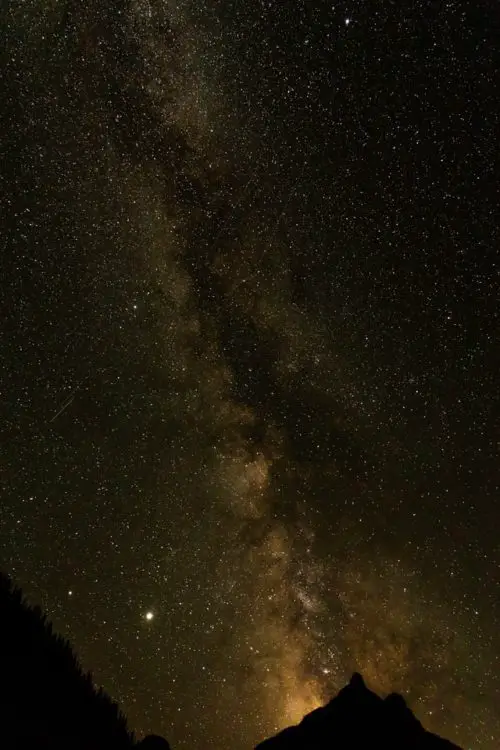
9. Lolo National Forest
Lolo National Forest includes 2 million acres spanning across western Montana and into Idaho. The Rattlesnake, Welcome Creek, Scapegoat, and Selway-Bitterroot Wilderness areas are inside the forest, and there’s a diverse range of plant and animal species. Western red cedars grow in high numbers here than anywhere else in Montana and reach heights of about 200 feet.
The forest is a paradise for bird watchers and includes hundreds of species such as bald eagles, golden eagles, herons, and ducks. You’ll also find grizzly bears, cougars, mountain goats, elk, and mule deer throughout the wilderness areas. The Flathead River through the forest, and there are over 100 lakes that offer an abundance of water activities. With around 700 miles of hiking trails and nearly 30 campgrounds, there’s plenty of space to find your sanctuary.
10. Beaverhead-Deerlodge National Forest
At roughly 3.36 million acres, Beaverhead-Deerlodge National Forest is Montana’s largest federally-protected forest. The forest encompasses eight counties and contains rich minerals that attracted developers about a century ago. Parts of the forest straddle the Continental Divide and other mountain ranges, such as the Tobacco Root Mountains and the Elkhorn Mountains, cut through the wilderness.
Several ghost towns in the region highlight the once flourishing mining communities that migrated to Montana. With about 1,500 miles of hiking trails and 50 campgrounds, there is lots of space for recreational activities. Visitors have easy access to numerous lakes and rivers for summer fun on the water, and well-groomed snowmobiling trails entertain winter tourists.
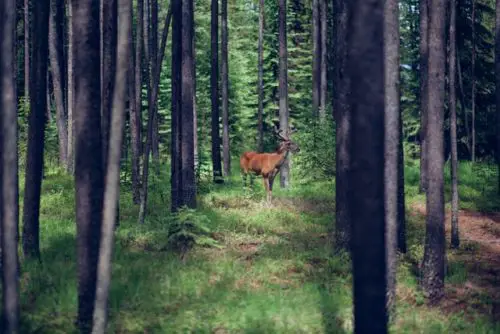
11. Lewis & Clark Caverns State Park
Montana’s first state park, Lewis & Clark Caverns delves into the natural beauty beneath the surface. The complex system is one of the largest discovered limestone caverns in the American Northwest, and guided tours show off the geologic formations.
Inside the caves, you’ll notice stalactites, stalagmites, columns, and helictites. Above the surface, there are hiking and cycling trails, educational displays, an informative visitor center, amphitheatre, and a spacious campground.
Guided tours of the caverns are only offered May-September, but the campground, rental cabins, and hiking trails operate year-round. There are 40 individual campsites, three cabins, and a tipi for a unique camping experience. To complement cavern tours, the park also hosts events for tourists during the summer.
12. Makoshika State Park
Situated near the Yellowstone River in eastern Montana, Makoshika State Park is 11,000 acres of Badlands, dinosaur fossils, and geologic wonders. As the largest state park in Montana, Makoshika gives you lots of space for adventurous outdoor activities. The recreation area includes scenic drives, hiking trails, picnic sites, an amphitheatre, and a renovated visitor center with Triceratops and Tyrannosaurus Rex fossils.
There are fun events in the park throughout the year and 28 campsites to pitch your tent. If you have children in your group, let them experience the park’s Friday night campfire programs. The campsite amenities include picnic tables, potable water, pit/vault toilets, and fire rings. After roaming through the park’s wicked Badlands, watching wildlife, and playing disc golf, whip up a filling meal by the campfire.

13. Medicine Rocks State Park
Not many tourists visit Southeast Montana, and that’s what makes Medicine Rocks State Park a fantastic camping spot. President Teddy Roosevelt stumbled upon this landscape in the late 1800s and instantly fell in love with its beauty. Located just north of Ekalaka, the park contains hoodoo-like sandstone pillars that rise high above you. The columns formed over many centuries and the Native Americans who inhabited the landscape inscribed beautiful rock art into them.
The site remains sacred to the Plains Indians, and the 330-acre park nurtures a healthy population of antelope, mule deer, and grouse. In addition to 12 camping sites, there are hiking trails, biking paths, and picnic areas. Amenities at the campground include grills & fire rings, vault toilets, drinking water, picnic tables, and maps.
14. Lost Creek State Park
Located outside of Anaconda, Lost Creek State Park features 500 acres of tumbling waterfalls, limestone cliffs, and sharp canyon walls. The park’s main highlight is Lost Creek Falls, which plunges over a 50-foot drop. A short hiking path leads trekkers to the scenic spot, and other popular activities include biking, fishing, picnicking, and wildlife viewing.
You’ll find additional hiking trails along Lost Creek that provide unparalleled views of pristine meadows and the adjacent mountain ranges. The park contains a variety of wild animals, but mountain goats, bighorn sheep, and golden eagles are seen most by visitors. There are 25 campsites inside the park, and they’re all first-come, first-served sites.
15. Whitefish Lake State Park
Situated beside Whitefish Lake and 45 minutes from Glacier National Park, Whitefish Lake State Park is an excellent camping base for the area. Although the park is just 10 acres, there are 25 campsites and numerous recreational activities. Spend summer afternoons swimming, boating, fishing, or water skiing on the lake or tackle the nearby Whitefish hiking and biking trail system. The renowned Whitefish Mountain Resort is a 10-mile drive from the park and offers exciting runs for skiers and snowboarders.
The park’s campground has tent only and RV sites, and a hike-bike campsite accommodates long-distance voyagers. Whether you have a picnic or lounge on the beach, Whitefish Lake State Park is a beautiful spot to unwind. If you’re low on camping supplies, the town is just a couple miles from the park.
Do you have a camping spot to add to the list of best camping in Montana? Let us know by commenting in the comment section below.
Like it? Pin it ?


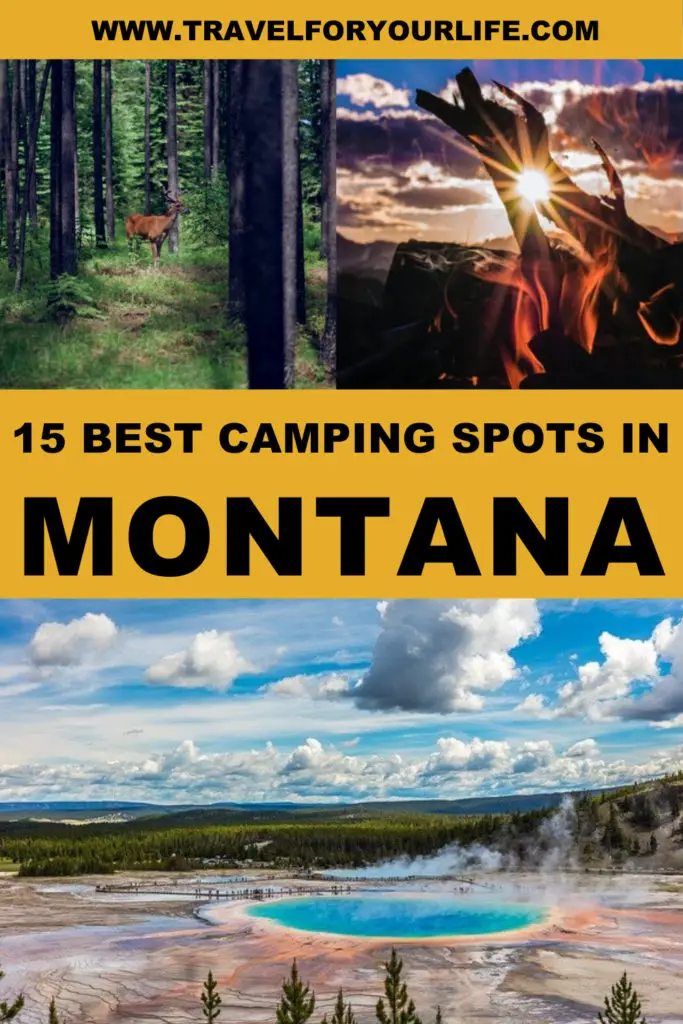
Related Posts
The top spots for Camping in Alaska
Camping is among my top recommendations for an adventurous Alaskan vacation. Surrounded by jaw-dropping scenery and the peaceful sounds of nature will complete an unforgettable trip to this beautiful state. When I need a break from society to clear my head, camping is...
Best Time to Go Whale Watching in Alaska
Whale watching is a personal pastime of mine, and Alaska is a bucket list destination for wildlife enthusiasts. Every summer, whales make their long migration from the warmer waters of Mexico and Hawaii to the food-rich waters of Alaska. Travelers who dream of...
The Best Spots for an Epic Alaska Hiking Trip
Alaska is a hiker’s paradise, and anyone who loves nature will never want to leave this wild frontier. The state is home to turquoise lakes, alpine tundra, sparkling rivers, temperate rainforest, and some of the highest peaks in North America. It’s enough to leave me...
How to Spend an Adventurous Trip to Alaska
Alaska is dubbed the Last American Frontier. It’s arguably the last place in the United States where you can unplug from the modern world and feel at one with Mother Nature. Its isolated wilderness, dramatic landscapes, and diverse wildlife make Alaska one of the...
The 13 Best Hikes in Zion National Park
Utah has unbelievable natural scenery, and it’s one of my favorite places to hike in the United States. There’s no shortage of incredible trails in this geologic wonderland. From the hoodoo amphitheatre of Bryce Canyon National Park to the sandstone arches of Arches...
Your Ultimate Guide to the Best Hikes in Olympic National Park
Far away from the red-rock cliffs of Zion National Park and sandstone arches of Arches National Park, Washington’s Olympic National Park feels like a different universe. Its temperate rainforests are unlike anything I’ve ever seen in America, and its rugged coastline...





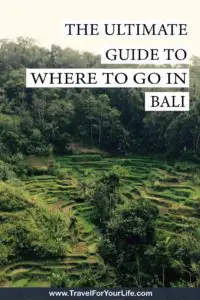

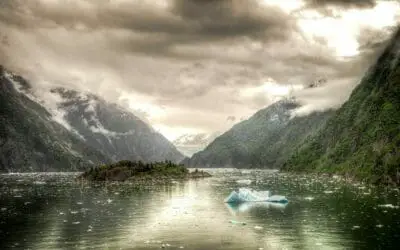



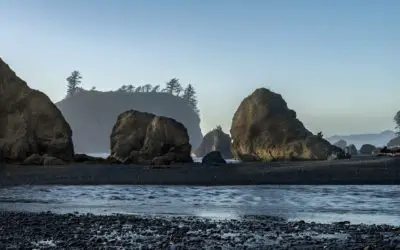

0 Comments